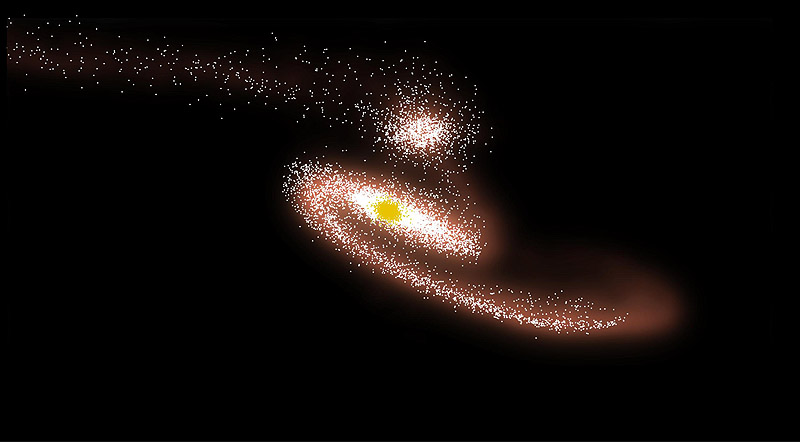Computer simulations of the collision between NGC 6872 and IC 4970 reproduce the basic features of the galaxies as we see them today. Image credit: (NASA’s Goddard Space Flight Center, after C. Horellou (Onsala Space Observatory) and B. Koribalski (ATNF))
Home Computer simulations of the collision between NGC 6872 and IC 4970 reproduce the basic features of the galaxies as we see them today. Image credit: (NASA’s Goddard Space Flight Center, after C. Horellou (Onsala Space Observatory) and B. Koribalski (ATNF)) Computer simulations of the collision between NGC 6872 and IC 4970 reproduce the basic features of the galaxies as we see them today. Image credit: (NASA's Goddard Space Flight Center, after C. Horellou (Onsala Space Observatory) and B. Koribalski (ATNF))



